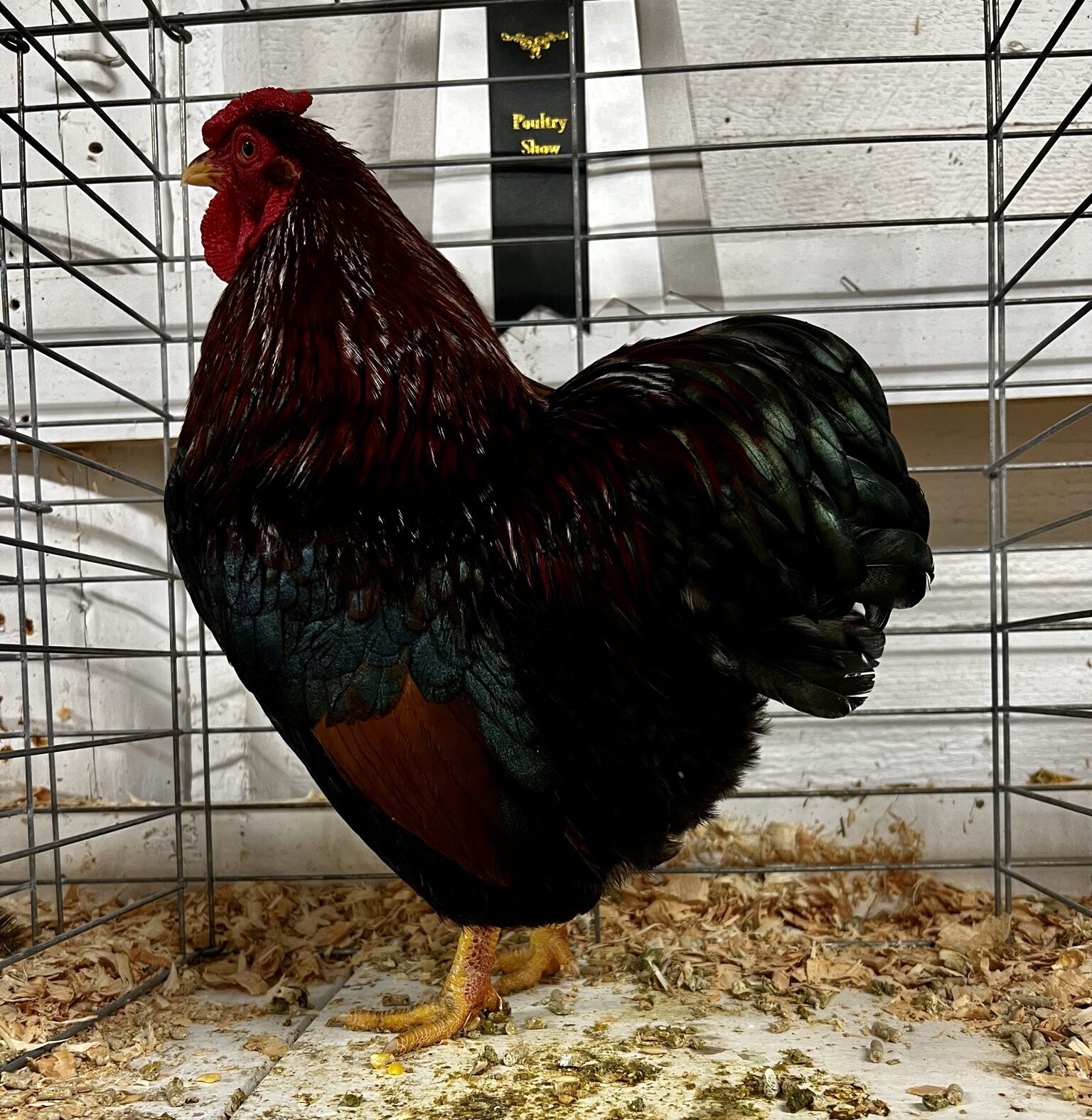Giving Young Birds a Chance
This article is giving young birds a chance to finish growing before deciding if they are breeding quality or not, and is being republished from Acorn Hollow Bantams website with permission from Lou Horton.
A common mistake made even by experienced breeders is to rush the selection process in the late summer/fall of the year. Maybe the incentive to do so is saving feed costs by reducing the flock or maybe one has the opportunity to sell surplus birds. Either way, one risks the possibility that one will let go of a bird that could have helped one’s breeding program. Some breeds of ducks, most breeds of geese and many breeds of chickens may really benefit from a month or six weeks of extra maturation when selection of breeding/show stock is to be undertaken. I will cite some examples from breeds that I know well, namely the Call and Wyandotte bantam. A young Call normally will not become as good as it will be until it’s second year. It will attain its adult length and many other dimensions by about six months of age. It will not attain a fully developed head (in terms of buffling) until that second year, however, and it may not fully develop it’s body width and depth until then. That extra development may take a good Call and make it a great one-or not. A Gray Call drake may improve in bib color (less frosting) in it’s second year-not always but often.
Now I am not suggesting that culling or selling surplus Calls should never be done before year two-a big bird will still be big and a long billed bird will not shorten it’s bill in the second year. What I am saying is that birds of good potential should perhaps be given some extra growing time before a final decision is reached on them.The extra cost of carrying over a few extra Calls will not amount to much and a good Call will usually sell for at least as much as a yearling.

A mistake can be made even more easily when evaluating young Wyandottes. Young Wyandottes take about five to six months to develop their width and adult type. Usually pullets will be as good as they will ever be when they begin to lay. Males, however, may take a month or even two more to show what they can become. A male that looks too long and narrow may suddenly “pop” within a two or three week period. That means that he will suddenly approach his potential in terms of his adult type. Buff colored males in particular may improve slightly in color in their second year (some mysterious light colored spots on their wings often disappear). In some breeds, old time breeders felt that the difference between first and second year chickens was so important that they would never breed from pullets in particular-only yearling hens and older. A noted breeder of Rhode Island Reds (Choice Culver) from the nineteen fifties once told me that he had never used a young female in one of his matings.
An important criteria I use when deciding if I will retain a second year bird is the width and overall quality of the wing feathers after it’s first full moult. A hen or cock bird which retains good width of feather in it’s second year will often make a valuable breeder. I will wash them after they have completed the moult and then make my decision. I guess that the old saying “haste makes waste” really applies in such situations.
Giving young birds a chance by Lou Horton
